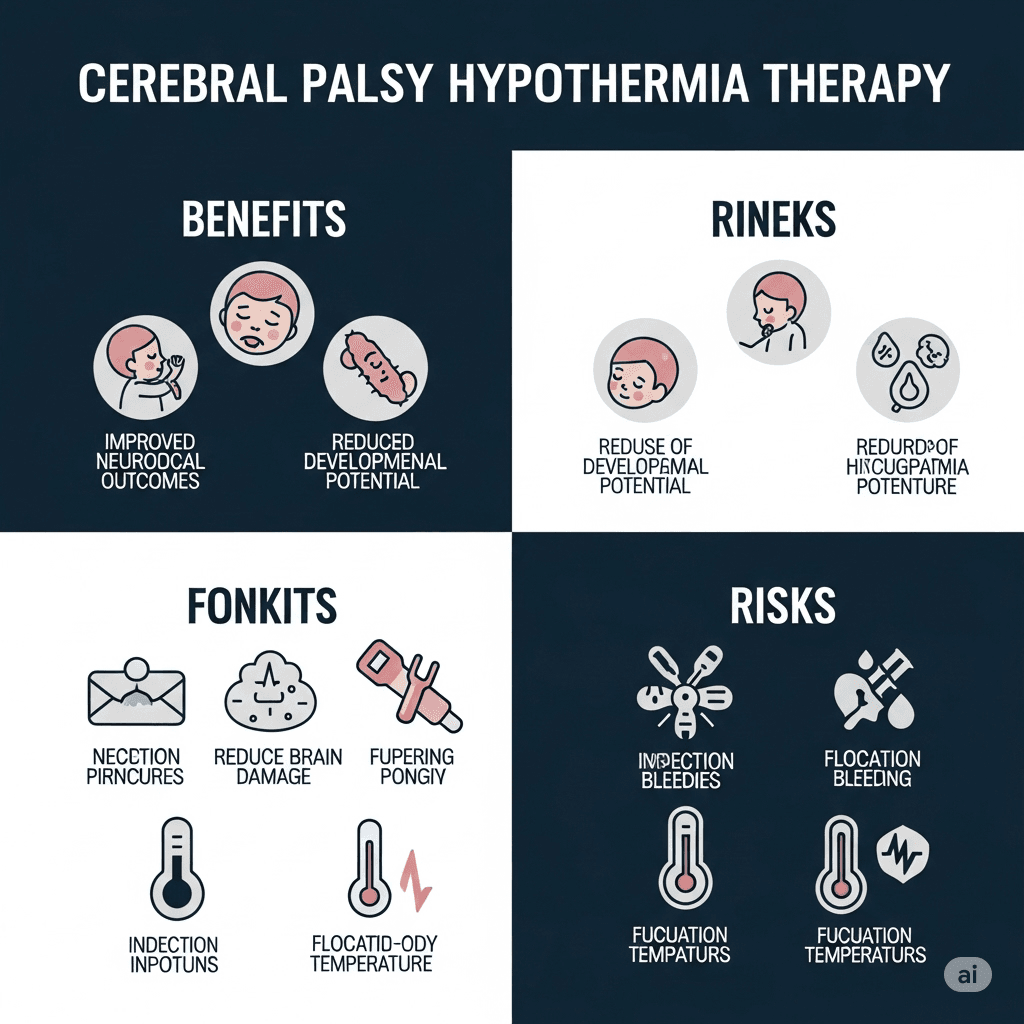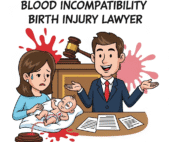Cerebral Palsy Hypothermia Therapy is offering new hope for families whose newborns are at risk of developing brain injuries at birth. By cooling the infant’s body to a precise temperature, this treatment can slow harmful processes in the brain—possibly preventing the onset of Cerebral Palsy (CP).
Let’s dive into how this works, who it can help, and what parents need to know.
What Is Cerebral Palsy Hypothermia Therapy?
Therapeutic hypothermia, also known as brain cooling, is a medical treatment used on infants who experience oxygen deprivation during birth—known as hypoxic-ischemic encephalopathy (HIE).
In Cerebral Palsy Hypothermia Therapy, the newborn’s body temperature is reduced to approximately 33.5°C (92.3°F) for up to 72 hours using specialized cooling blankets or caps. This intervention helps slow the body’s metabolic rate, giving brain cells a better chance to recover and reducing permanent injury.
How Hypothermia Therapy Helps in Cerebral Palsy Cases
Cerebral Palsy is often caused by brain injury during or shortly after birth. Hypothermia therapy targets that critical window—within 6 hours of birth—to halt or reduce the inflammatory and apoptotic processes that lead to brain cell death.
Studies show this therapy can significantly decrease the severity of motor function disabilities and improve developmental outcomes in high-risk infants.
When and Who Qualifies for Hypothermia Therapy
To be eligible for Cerebral Palsy Hypothermia Therapy, infants typically must:
- Be born at 36 weeks or later
- Have signs of oxygen deprivation (low APGAR scores, seizures, poor tone)
- Be diagnosed with moderate to severe HIE
Specialized NICUs use EEG and blood gas tests to assess candidacy quickly—speed is essential.
Benefits of Cerebral Palsy Hypothermia Therapy
When administered correctly and on time, benefits include:
- Lower risk of severe CP symptoms
- Increased likelihood of walking, talking, and feeding independently
- Higher survival rate without major cognitive impairments
It’s a proactive step—one that may prevent a lifetime of struggle and pain for families.
Potential Risks and Limitations
Like all interventions, hypothermia therapy has risks:
- Slow heart rate (bradycardia)
- Increased bleeding risk
- Potential infection
Additionally, not all infants qualify, and the therapy doesn’t eliminate all types of brain damage. It’s most effective when combined with follow-up care and therapies.
Research and Case Studies on Hypothermia Therapy
Landmark studies like the TOBY trial (Total Body Hypothermia for Neonatal Encephalopathy) show that infants treated with hypothermia were less likely to develop CP than untreated infants.
Data from long-term follow-ups show improvement in motor skills, communication, and quality of life.
What Parents Need to Know Before Choosing Hypothermia Therapy
Ask your care team:
- Was my child deprived of oxygen?
- Are they eligible for this therapy?
- How quickly can treatment begin?
As a parent, you have the right to ask for a second opinion or demand treatment options. Early intervention is critical.
Can Hypothermia Therapy Be a Legal Case Factor?
In some cases, failure to offer hypothermia therapy after birth injury may signal negligence. Hospitals must meet the standard of care for high-risk deliveries.
If your child developed CP and wasn’t offered this therapy, or it was delayed, it may be time to explore your legal rights.
Learn more about how birth injuries can connect to auto accidents and trauma cases if a parent was injured during pregnancy.
Final Thoughts
Cerebral Palsy Hypothermia Therapy is a groundbreaking option that every parent should know about. If your baby is at risk of brain injury, ask your doctor immediately whether this treatment is appropriate—it could change your child’s life forever.
Think your child’s Cerebral Palsy may be linked to a birth injury or delayed hypothermia treatment?
👉 Fill out our FREE Consultation Form today to speak with a legal expert. Your case could make a difference.
What is Cerebral Palsy Hypothermia Therapy?
It’s a cooling treatment used to reduce brain damage in newborns at risk of developing CP due to oxygen deprivation at birth.
How soon must hypothermia therapy be started?
It must begin within 6 hours of birth for optimal results, usually in a NICU setting.
Is hypothermia therapy painful or dangerous?
It is non-invasive and closely monitored, but it may carry minor risks such as slower heart rate and bleeding issues.
Can this therapy prevent all cases of CP?
No, but it significantly reduces the severity and risk when administered correctly and on time.





Child Development Milestones Birth Injuries: What Parents Should Watch For
[…] A prompt evaluation can lead to an early diagnosis, such as Cerebral Palsy Symptoms Infants may show, allowing for targeted […]